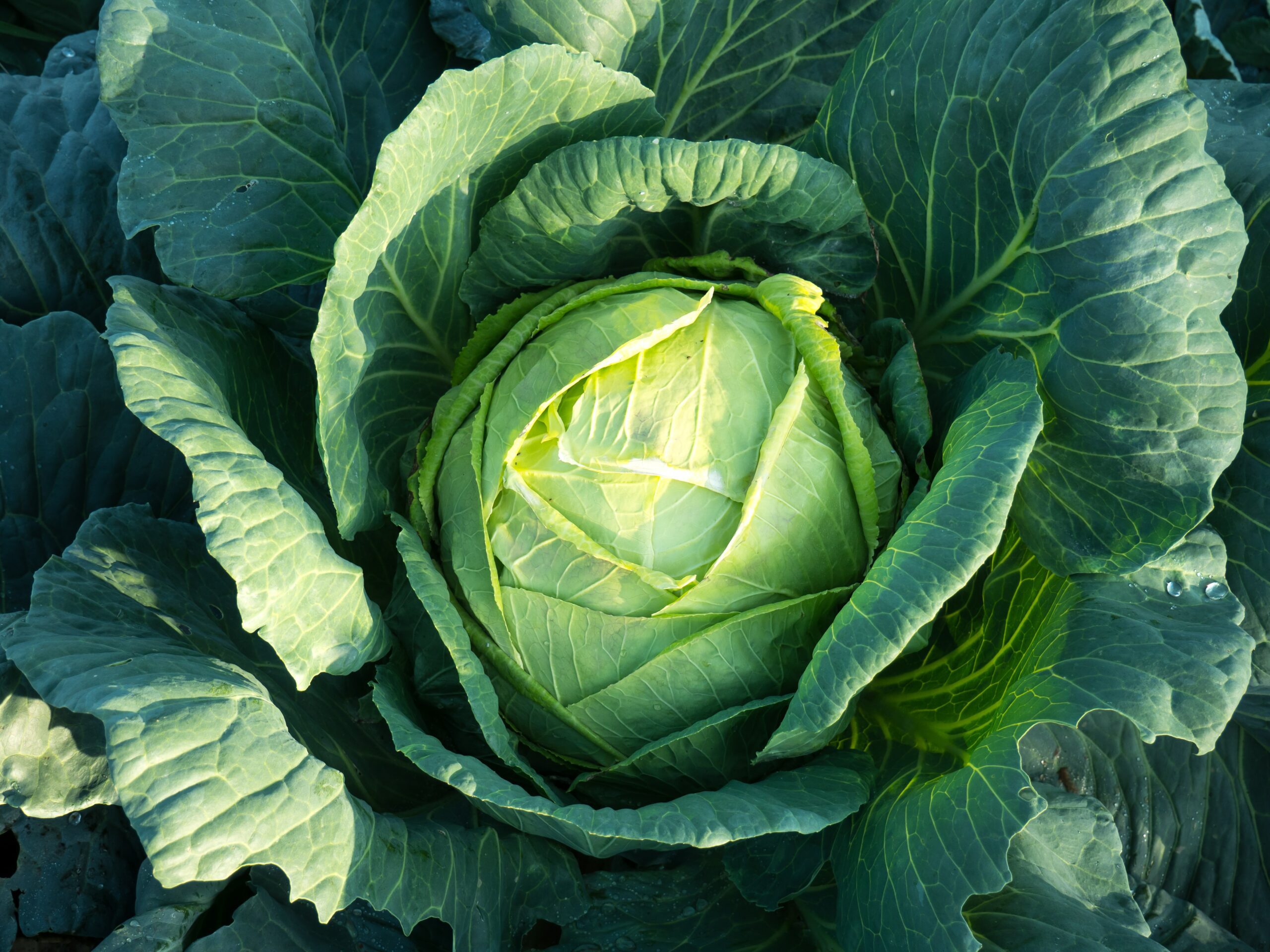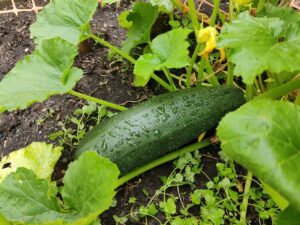How to Grow Cabbage from Seed to Harvest
Cabbage is a versatile and nutritious vegetable enjoyed in various dishes, making it a must-have in your home garden. If you’re curious about how to grow cabbage, this comprehensive guide will walk you through the entire process, from planting the seeds to harvesting the heads.
1. Cabbage: An Overview
Before diving into the details of how to grow cabbage, it’s essential to understand the characteristics of this nutritious vegetable. Cabbage (Brassica oleracea) is a cool-season crop from the same family as broccoli, cauliflower, and kale. There are various types of cabbage, such as green, red, and Savoy, each with its unique taste and texture. Cabbage is a biennial plant, but it’s usually grown annually for its edible leaves, which form a compact head.
Common Cabbage Varieties
Common cabbage (Brassica oleracea var. capitata) is a round, compact vegetable with smooth or crinkled leaves, depending on the variety. It comes in green, red, and savoy types, each with tightly packed leaves. Common cabbage has a robust flavour that can become sweeter when cooked and a dense, crunchy texture. It is versatile and used in various dishes, such as coleslaws, salads, soups, stuffed cabbage rolls, sauerkraut, and various cooked preparations.
- Red Express Cabbage: A vibrant purple-red variety with small to medium-sized heads and a relatively fast maturation period of 60-70 days.
- Golden Acre Cabbage: A popular green cabbage with round, compact heads and a relatively short growing season, maturing in 60-65 days.
- Copenhagen Market Cabbage: An early-maturing green cabbage with medium-sized, round heads and a sweet flavour, ready for harvest in 63-100 days
Chinese Cabbage Varieties
Chinese cabbage is a type of leafy vegetable that belongs to the Brassica rapa species. It is characterized by its mild, slightly sweet flavour and tender texture. Often used in Asian cuisine, Chinese cabbage is versatile and can be found in various dishes, including stir-fries, salads, soups, and pickled preparations such as kimchi. It offers a unique flavour and texture profile compared to other cabbage types, making it a popular choice for adding variety to meals.
- Michihili Cabbage: A type of Napa cabbage with tall, cylindrical heads and loosely packed leaves, commonly used in Chinese pickles and stir-fries.
- Bok Choy (Pak Choi): A Chinese cabbage variety featuring dark green leaves and crisp, white stalks, known for its succulent, tender texture and mild, sweet flavour.
- Baby Bok Choy: A smaller, more tender version of bok choy with a delicate flavour and texture, perfect for salads and quick cooking.
- Napa Cabbage: An elongated, barrel-shaped Chinese cabbage with tightly packed, pale green to yellow, crinkly leaves and a tender, slightly crunchy texture.
2. Growing Cabbage from Seed
Learning how to grow cabbage from seed is an essential skill for any gardener. Cabbage seeds can be easily found in garden centers or online retailers. When choosing seeds, ensure they are of high quality and from a reputable supplier for the best results.
Seed Germination
Fill a seed tray or small pots with a well-draining, seed-starting mix to start your cabbage seeds. Sow the seeds about 1/4 inch deep and cover them lightly with soil. Mist the soil with water to moisten it, and then cover the tray or pots with plastic wrap to retain moisture.
Place the tray or pots in a location with a consistent temperature of 65-75°F (18-24°C) and indirect sunlight. The seeds should start germinating in 5-10 days. After germination, remove the plastic wrap and move the seedlings to a sunny spot.
Hardening Off
Cabbage seedlings need to be hardened off before transplanting outdoors. This process involves gradually exposing them to outdoor conditions to reduce transplant shock. Begin hardening off your seedlings about two weeks before your intended planting date. Place the seedlings outdoors in a sheltered location for a few hours each day, gradually increasing the time and exposure to sunlight.
3. Planting Cabbage for Success
After hardening off your seedlings, it’s time to transplant them into the garden or larger containers. Follow these steps on how to plant cabbage for the best results.
When to Plant
Cabbage can be planted in spring or fall, depending on your climate and growing variety. Transplant your seedlings outdoors 2-3 weeks before the last frost date for a spring crop or 6-8 weeks before the first frost date for a fall crop.
Site Selection
Choose a location in your garden that receives full sun to partial shade. Cabbage grows best in well-drained, loamy soil with a pH between 6.0 and 7.0. If you’re growing cabbage in containers, ensure the pots have drainage holes and use a well-draining potting mix.
Plant Spacing
When transplanting cabbage seedlings, space them about 18-24 inches apart in rows, with rows spaced 24-36 inches apart. For container-grown cabbage, plant one seedling per pot that’s at least 12 inches in diameter and 12 inches deep.
Watering
Water the newly transplanted seedlings thoroughly to help them establish themselves in their new environment. Keep the soil consistently moist but not waterlogged. Cabbage plants have a shallow root system, so watering regularly is essential, especially during dry spells.
4. Caring for Your Cabbage Plants
Learning how to care for cabbage is crucial for a successful harvest. Here are some essential tips to help your cabbage plants thrive:
Fertilizing
Cabbage is a heavy feeder and requires regular fertilization to produce large, healthy heads. Apply a balanced, slow-release fertilizer at planting time and once more during the growing season. Alternatively, use a liquid organic fertilizer for container-grown cabbage every 4-6 weeks.
Mulching
To help conserve moisture, regulate soil temperature, and suppress weeds, apply a 2-inch layer of organic mulch around the base of your cabbage plants. Mulch materials can include shredded leaves, grass clippings, or straw.
Thinning
If your cabbage plants become too crowded, thin them out by gently pulling up the excess seedlings. This will help improve air circulation and reduce the risk of diseases.
Rotating Crops for a Healthier Garden
In addition to companion planting, practicing crop rotation can help maintain a healthy garden. Crop rotation involves changing the location of plant families in your garden each year, reducing the build-up of pests and diseases specific to certain plants. Generally, avoid planting cabbage or other brassicas in the same spot for at least three years.
Pest and Disease Control
Cabbage is susceptible to various pests and diseases, such as cabbage worms, aphids, and clubroot. Check your plants regularly for signs of these issues and treat them accordingly. For example, use Bt (Bacillus thuringiensis) to control cabbage worms or apply insecticidal soap or neem oil to manage aphids. To minimize the risk of diseases, ensure proper plant spacing, practice crop rotation, and avoid overhead watering.
- Cabbage Worms and Loopers: These caterpillars chew on cabbage leaves, leaving large holes. Control them by handpicking, using floating row covers, or applying Bacillus thuringiensis (Bt), an organic pesticide.
- Aphids: These tiny pests suck plant sap, causing leaves to curl and stunt growth. Control aphids by releasing beneficial insects like ladybugs, spraying insecticidal soap, or using a strong water spray to dislodge them.
- Clubroot: This soil-borne disease causes swollen, distorted roots and stunted growth. Prevent clubroot by maintaining a soil pH of 7.0 or higher, practicing crop rotation, and removing infected plants immediately.
- Black Rot: A bacterial disease, black rot causes the yellowing and wilting of leaves, eventually turning them black. To prevent black rot, practice crop rotation, use disease-free seeds and transplants, and avoid overhead watering.
- Downy Mildew: This fungal disease appears as yellow patches on the upper leaf surface and a white, fuzzy growth on the lower surface. Improve air circulation, avoid overhead watering, and use organic fungicides to prevent downy mildew.
By staying proactive and implementing effective pest and disease management techniques, you can protect your cabbage plants from these common problems. Regularly monitor your plants for signs of infestation or disease and apply the appropriate treatments as needed. You’ll enjoy a bountiful harvest of healthy, homegrown cabbage with proper care.
5. Harvesting Cabbage: Tips and Tricks
Knowing how to harvest cabbage is essential for enjoying the freshest, most delicious produce. Follow these tips for the best harvest:
When to Harvest
Cabbage heads can be harvested when they reach the desired size and feel firm when squeezed gently. The size will vary depending on your growing variety, but most types are ready to harvest 70-100 days after transplanting.
Harvesting Method
To harvest a cabbage head, use a sharp knife to cut the stem at the base of the head. Leave a few outer leaves attached to protect the head during storage.
Storing Cabbage
Cabbage can be stored in a cool, dark place, such as a refrigerator or root cellar, for several weeks. Keep the heads in a perforated plastic bag or wrap them loosely in a damp cloth to maintain freshness.
6. How Long Does It Take Cabbage to Grow?
One common question among gardeners is, “How long does it take cabbage to grow?” The answer depends on the variety and growing conditions. Most cabbage varieties take between 70 and 100 days from transplanting to reach maturity. Early varieties may mature in as little as 50 days, while late-season varieties can take up to 120 days.
By following these guidelines on how to grow cabbage, you’ll be well on your way to enjoying fresh, homegrown cabbage in your favourite dishes. Happy gardening!
7. Companion Planting for Cabbage
Companion planting is the practice of growing plants together that benefit one another, leading to a healthier, more productive garden. Benefits of companion plants for cabbage include:
- Pest control: Some plants deter harmful insects or attract beneficial ones, reducing the need for chemical pesticides.
- Improved soil fertility: Certain plants, such as legumes, fix nitrogen in the soil, making it available for other plants.
- Enhanced growth and flavour: Some companions improve each other’s growth, yield, or taste by releasing beneficial compounds.
- Efficient space utilization: Planting taller plants with shorter ones maximizes garden space and can provide shade or support for other plants.
The Best Companion Plants for Cabbage
When planting cabbage, choose companions that support its growth and deter pests. Here are some excellent companion plants for cabbage:
- Aromatic Herbs: Herbs like dill, thyme, rosemary, and sage release scents that deter cabbage pests like cabbage moths, aphids, and whiteflies. These herbs also attract beneficial insects that prey on cabbage pests.
- Onions and Garlic: Both onions and garlic emit strong odours that repel cabbage pests, including cabbage worms, loopers, and root maggots. They also have antifungal properties, which can help prevent fungal diseases in the cabbage patch.
- Nasturtiums: These colourful flowers add beauty to your garden and act as a trap crop for aphids, protecting your cabbage plants. Nasturtiums also attract beneficial insects like ladybugs and lacewings.
- Marigolds: Marigolds are known to repel various pests, including cabbage worms and nematodes, thanks to their strong scent. Plant marigolds around the border of your cabbage patch or interplant them with your cabbages.
- Legumes: Plants like peas and beans fix nitrogen in the soil, providing an essential nutrient for cabbage growth. They can also serve as a living mulch, suppressing weeds and preserving soil moisture.
- Leafy Greens: Lettuces, spinach, and other leafy greens have shallow roots, making them ideal companions for cabbage, as they don’t compete for nutrients. These greens can also provide ground cover, helping to conserve soil moisture and suppress weeds.
- Celery: Celery is another good companion for cabbage, as it helps repel cabbage pests like whiteflies and cabbage worms. It also has shallow roots, reducing competition for nutrients and water.
Related Articles:
Plants to Avoid Near Cabbage
While some plants benefit from cabbage, others can have detrimental effects. Avoid planting the following near your cabbages:
- Tomatoes: Tomatoes can attract pests like whiteflies and aphids, which can spread to your cabbage plants. They also compete for nutrients, potentially stunting cabbage growth.
- Strawberries: Strawberries and cabbages have similar nutrient requirements, making them poor companions. They can also be susceptible to verticillium wilt, a soil-borne fungal disease.
- Pole Beans: Pole beans and cabbage can stunt each other’s growth as they compete for nutrients and space.
- Mustard: Mustard plants can attract pests like aphids and flea beetles, which can infest your cabbage plants.
Incorporating companion plants for cabbage into your garden is a wise strategy for promoting a healthier and more productive cabbage crop. These companion plants can help deter pests, improve soil fertility, and even enhance the flavour of your cabbage. Selecting the right companion plants for cabbage will create a more balanced and harmonious garden ecosystem that allows your vegetables to thrive. Embrace the power of companion planting and witness its benefits to your cabbage-growing experience.
Conclusion
In conclusion, successfully growing cabbage in your garden involves understanding the entire process. By learning how to grow cabbage and mastering the techniques of growing cabbage from seed, you’ll ensure a strong start for your plants. Following the steps on how to plant cabbage and providing proper care will set your plants up for success. As you care for your cabbage plants by providing adequate water, fertilizer, and pest control, you’ll see them flourish. Knowing how to harvest cabbage correctly will provide you with the freshest, most delicious produce for your culinary creations. Finally, understanding how long it takes cabbage to grow will help you plan your garden accordingly. With this knowledge, you’re ready to embark on your cabbage-growing journey and enjoy the benefits of homegrown vegetables.




